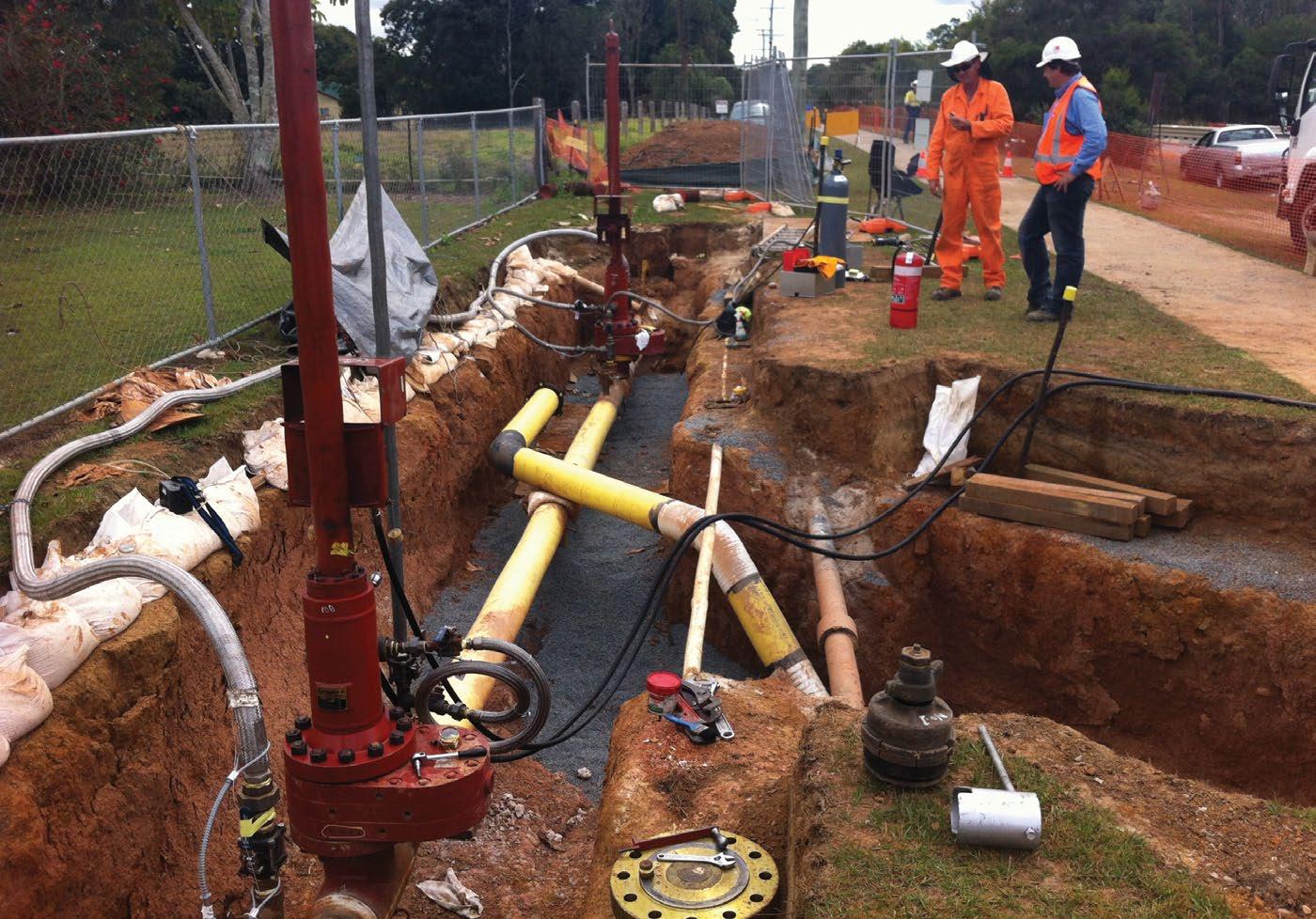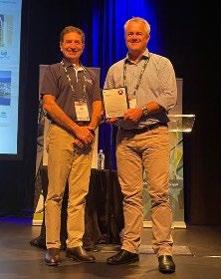
5 minute read
Subsurface Utility Engineering (Sue) Enhanced Through Collaboration
Rob Sansbury Principal, Infrastructure Manager at Stantec
The success of managing subsurface utilities in Australia (and in many places in the world) can be measured by stakeholder collaboration. These stakeholders include a long list of project owners, developers, project managers, State and local authorities, public utility authorities, design engineers, surveyors, locaters and last (but by no means least) the constructor on the ground.
This article contends that the correct practice of SUE is very much dependent on successful collaboration among stakeholders.
To reflect on a regrettable incident in the US several years ago:
The tell-tale hiss and the distinctive smell of natural gas got most of the workers out of the area in time, but not all of them.
When the dust had cleared from the explosion that rocked the USA town of Rochester in Michigan on the afternoon of May 20, 1992, one man lay dead and seventeen were hospitalised from wounds received in the blast.
It was clear what had happened: a construction crew had disturbed an underground gas line while working on a beautification project downtown.
Technically, the required precautions had all been followed, the one-call (equivalent of Australian Dial Before You Dig) centre had been alerted as required by law, the gas company had made its mark on the ground showing where it thought the gas line was supposed to be.
The engineer had called for excavation at the particular spot (of course with a disclaimer regarding the accuracy of underground utility data) and the construction people had “hand-exposed” as required, at the spot indicated by the engineer.
But all this was small, if little consolation to the families of the dead and injured. And what’s more, no one could be held accountable for the Brobdingnagian tragedy. (Onecall - the USA equivalent of DBYD).
The result of this tragedy, and many similar incidents across the USA, led the Department of Transport to develop a rulebook called ASCE38-02 that mandated the responsibility for the management of underground utilities to the subsurface utility engineer (that is part of the engineering design team).
Do we have an equivalent rulebook in Australia?
Australia developed a similar type standard (AS5488) in 2013 however, it only related to Subsurface Utility Information (SUI). In 2019, an upgrade version of AS5488 was released - AS54882019 (Part 2) to include a section covering SUE.
The 2019 update to AS5488 was produced under Standards Australia’s guidance, with Bruce Wilson (former Director-General of Queensland Transport) acting as Chairman. As the National Engineers Australia representative on the committee, I led the development of AS5488-2019
alongside Mark Follett, Utilities Design Engineering Construction, who provided critical advice and input.
AS5488-2019 is one of six Standards (or rulebooks) across the globe. The others were designed in the USA, UK, Canada, Malaysia and Ecuador.
Subsurface Utility Engineering (SUE, as defined in AS54882019) refers to an engineering management process that involves engineering, geophysics and geospatial disciplines and technologies. Specific risks associated with utility mapping are managed at appropriate quality levels, including utility coordination, utility relocation design and coordination, utility condition assessment, communication of Subsurface Utility Information (SUI) utility
data to concerned parties, utility relocation cost estimates, implementation of utility accommodation policies, and utility designs.
In review of SUE, it is evident that this process is only successful with good collaboration. There are many intricacies and nuances associated with developing a project, including considering what utilities may be affected and how to design around, protect or relocate these utilities. Anyone who has ever worked within an arm’s length of subsurface utilities will recall adverse outcomes and on review will most likely agree that with better collaboration, things might have ended better.
It is indeed a common theme in the industry that it is better to manage subsurface utilities within the design phase than during the construction phase. Obvious imposts to time, cost and arguably most importantly, safety are often addressed too late.
The USA’s Standard has been in place for many years and university studies on multiple projects have shown that there are cost savings in the order of $3 to $10 during construction for every $1 spent on SUE during the design process. Furthermore, the SUE standard improves safety because there are fewer utility strikes. There is no conceivable reason why Australia should not be on par with the world’s best approach regarding Utility management.
Informing the market about AS5488 through education
A key factor of the upgraded AS5488 will be if it is released to an informed marketplace. The previous AS5488-2013 wasn’t well-adopted, primarily as a result of ineffective collaboration with the marketplace. In collaboration with key industry bodies, Stantec has developed a learning program titled Introduction to Subsurface Utility Engineering to lift the understanding and importance of subsurface utility engineering across Australia. This program provides a strong overview of SUE and details what the upgraded AS5488-2019 is aiming to achieve. Participants can provide direct input into what they think subsurface utility management should include, collaborate with other participants and engage directly through the platform with Subject Matter Experts.
How can the benefits of AS5488 be realised?
The significant safety and costsaving benefits that improved management of subsurface utilities brings, has been seen in countries that have had rulebooks in place for many years.
IPWEAQ, along with several peak bodies are all working with industry to advocate leading practice for all involved in the construction and management of infrastructure assets by adopting AS5488-2019 as their standard of care to subsurface utilities. We encourage infrastructure asset owners to implement the use of AS54882019 for all works related to Subsurface Utility Engineering and realise the resulting benefits.
For more information on this program, please email craig.moss@ipweaq.com
Example of multiple subsurface utility open trench

Vacuum Excavation Activity
3-dimensional subsurface utility model
Ground Penetrating Radar (GPR) Activity










